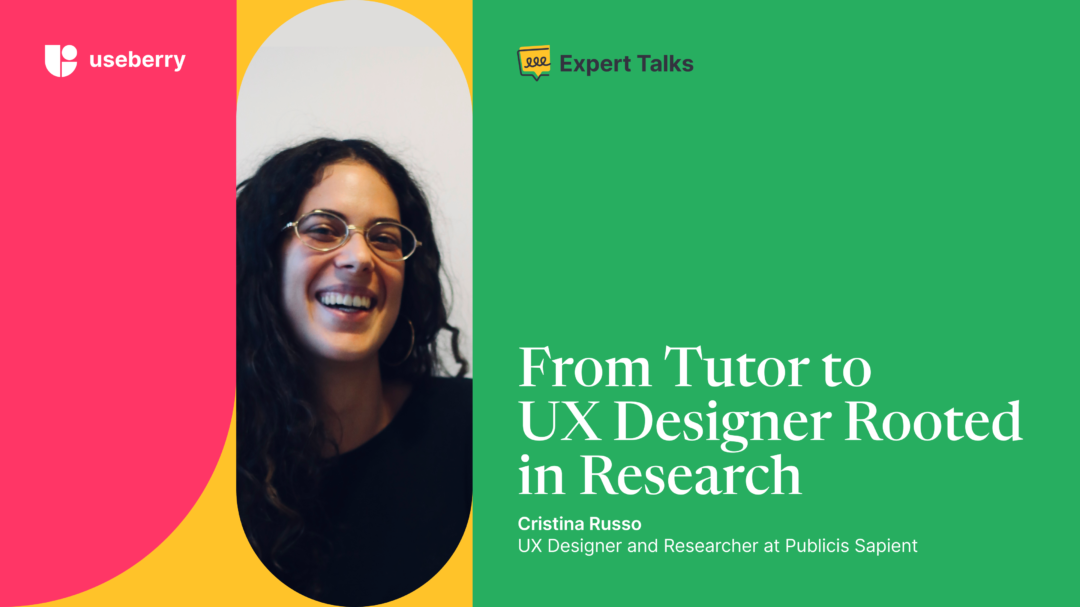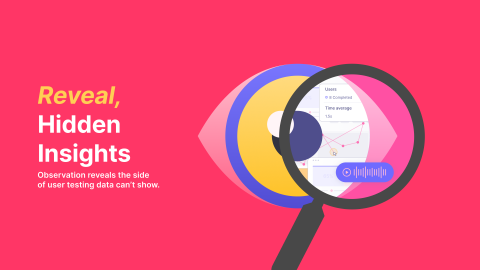An advocate for user-centric design and passionate about the blending of education and technology, Cristina Russo brings a wealth of experience to the field of UX design at Publicis Sapient. With a background in teaching and learning design, she has advanced her skills in empathetic design and collaborative problem-solving. Like performing Sirshasana, the headstand yoga pose, Cristina approaches professional challenges with balance. We sit down with her on the second episode of our interview series “Expert Talks” to uncover her insights and expertise in creating digital experiences users love… and so much more!
Let’s get started!
Design Journey: From Co-Designing Learning Experiences to Empathetic UX
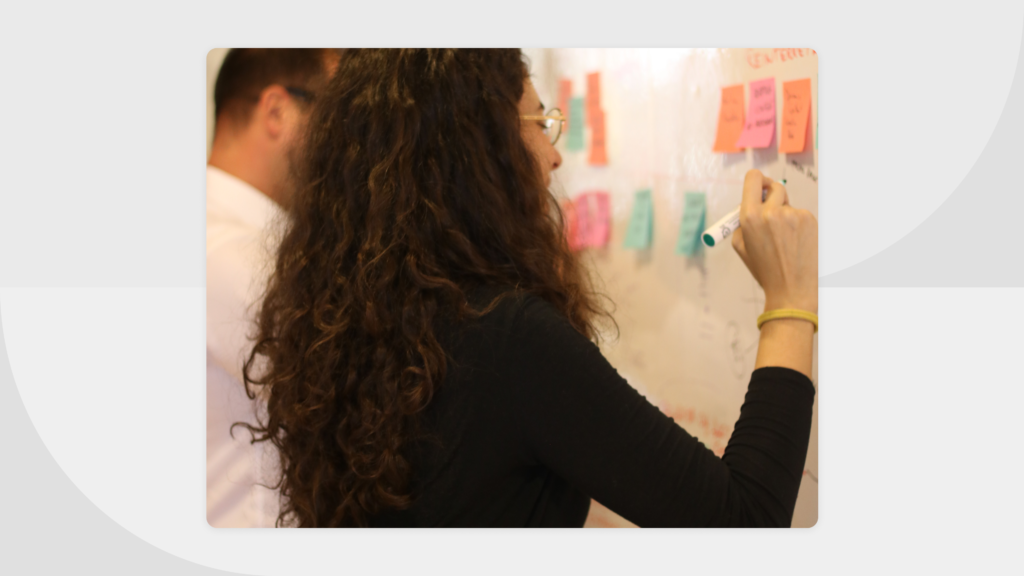
What pivotal moments in your education or early career steered you towards a specialization in UX?
Growing up I’ve always found myself drawn to the most diverse topics and matters, from science to art, from human psychology to problem solving. Later on, during my Product Design studies at Politecnico di Milano, I discovered that this multidisciplinary fascination was ultimately a fascination with understanding how things work and how people interact with them, and this laid the foundation for my specialization in UX Design.
How has your experience as a learning designer/tutor influenced the way you understand what users need?
My experience as a learning designer and tutor has been profoundly shaped by Paulo Freire’s notion of education as a reciprocal exchange rather than a unilateral process. This philosophy has guided me in my roles as a teaching assistant at Politecnico di Milano and as a co-designer of learning experiences at the Instituto Comprensivo Ilaria Alpi, an elementary school in Milan. At both institutions, I’ve witnessed firsthand the transformative power of empathy and understanding in the learning process. By embracing Freire’s principles, I’ve been able to engage in meaningful exchanges with students, co-designing educational experiences that cater to their needs and aspirations. Whether teaching design principles or introducing educational tools like Scratch, I’ve prioritized fostering a collaborative environment where both students and educators can learn and grow together. This approach has not only enriched my understanding of user needs but has also empowered me to create more impactful and inclusive user experiences in my work as a UX Designer.
Design Wisdom: Handling UX Research Challenges, GenUI and AI’s Impact

As a seasoned UX Designer, what do you see as the most pressing challenge in UX today, how does it differ from the challenges of the past?
I believe one of the biggest challenges in UX today is being able to look at the larger ecosystem our designs need to exist in. With the democratization of design tools, the emphasis has shifted from craft and polished aesthetics towards a more ecosystem-centered approach. Designers must now strengthen their ability to think beyond just the design on the screen or canvas, building a deep understanding of the context in which our designs will operate, considering factors such as user behavior, market trends, and technological advancements. By adopting a more strategic and holistic approach to UX, we can create products and services that not only look great but also function seamlessly within the larger ecosystem, ultimately leading to better outcomes for both users and businesses alike.
What strategies have you found most effective in navigating complex research challenges throughout your career in UX?
One of the most effective strategies I’ve adopted in my research work is relying on multiple sources of data, including both primary and secondary sources, in order to validate research findings and reduce bias. By triangulating data from different sources, we can increase the reliability and robustness of our conclusions as well as gain a more comprehensive and nuanced understanding of the research topic. Also, research rarely goes according to plan, so what I found is that it’s essential to remain flexible and adaptable. Being open to unexpected findings, adjusting research methods on the fly, and pivoting direction when necessary are all critical skills for navigating complex research challenges.
Are there any emerging UX trends that excite or concern you?
One emerging trend that both excites and concerns me is GenUI. GenUI, short for Generative User Interface, holds promise in its ability to dynamically adapt interfaces based on user behavior, preferences, and context. This can lead to highly personalized and intuitive user experiences, enhancing engagement and satisfaction. However, the concern arises from the potential ethical implications and challenges associated with GenUI. As these interfaces become more sophisticated, there’s a risk of inadvertently amplifying biases or creating filter bubbles, limiting users’ exposure to diverse perspectives and information. Additionally, ensuring transparency and user control in GenUI systems is crucial to maintaining trust and mitigating privacy concerns. Therefore, while GenUI offers exciting possibilities for enhancing UX, it’s essential to approach its implementation thoughtfully, prioritizing ethical design principles and user empowerment.
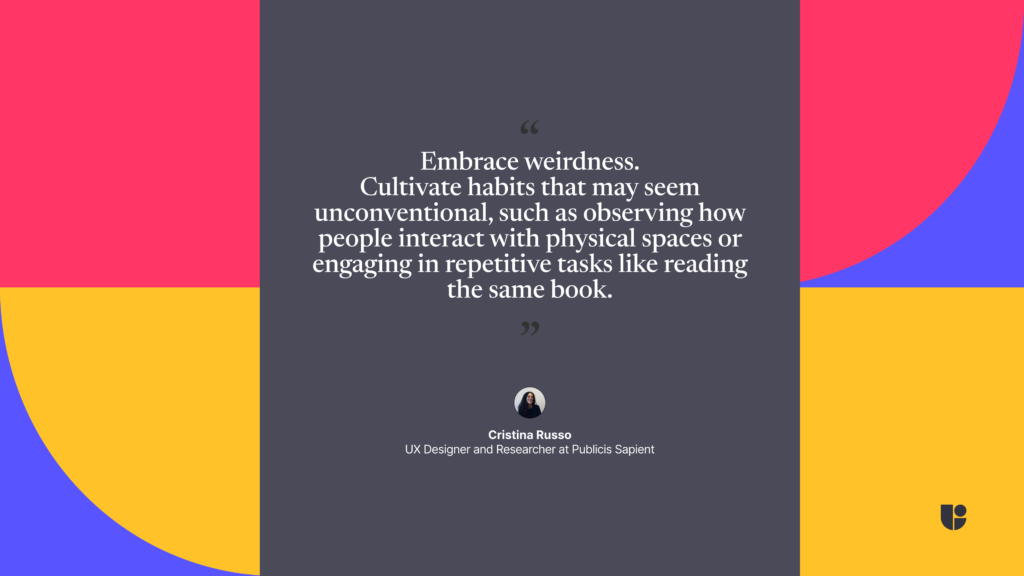
What golden piece of advice would you give to those just embarking on their UX journey?
To those just beginning their UX journey, my golden piece of advice is to embrace weirdness. Cultivate habits that may seem unconventional, such as observing how people interact with physical spaces or engaging in repetitive tasks like reading the same book or recreating the same work multiple times with variations. These seemingly odd practices can train your mind to notice nuances and details that others might overlook. By embracing these weird habits, you can develop a keen sense of observation and creativity, essential traits for effective UX design. You’ll learn to approach problems from unique perspectives, uncovering insights that lead to innovative solutions. Remember, it’s often the unconventional paths that lead to groundbreaking discoveries in UX.
AI’s influence is growing in UX design. Has AI impacted your workflow or decisions? What challenges do you foresee in integrating AI into UX research?
AI has become an integral part of my UX workflow. For example, natural language processing algorithms facilitate sentiment analysis of user feedback, helping me understand user needs and pain points more effectively. However, integrating AI into UX research presents its own set of challenges. One significant challenge is ensuring the ethical and responsible use of AI algorithms, particularly in data collection and analysis. There is a risk of bias and discrimination if AI models are not carefully designed and trained on diverse and representative datasets. Furthermore, there’s a challenge in interpreting and contextualizing AI-generated insights within the broader framework of user experience. While AI can uncover patterns and trends in data, human designers are still needed to interpret these findings, understand user motivations, and make empathetic design decisions.
Getting the Most from Useberry: Easy Testing for Better Design
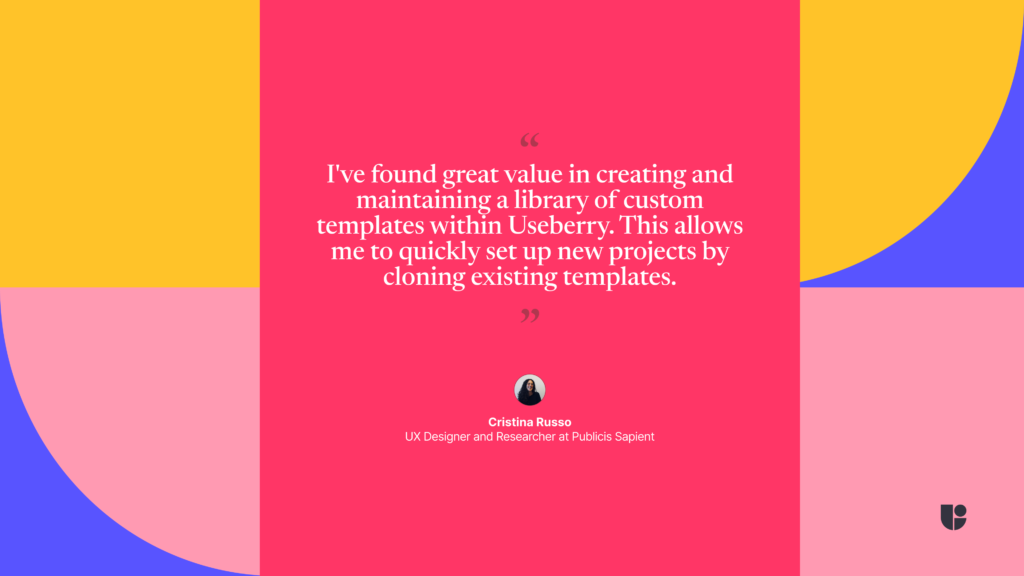
Could you describe a situation where Useberry’s tools made a significant difference in any of your projects?
Useberry has been instrumental in fostering a strong user-centric culture within our organization and enhancing our lean UX research model. UX research has become so crucial to our clients that they tend to not make any decisions without user testing first. This means creating and conducting user tests continuously, even with tight deadlines. Useberry enables us to design test scenarios, launch surveys, and iterate quickly based on real-time insights.
Could you share which Useberry feature is a must for you, and why?
One Useberry feature that is an absolute must for me is the “Single Task” functionality. This feature allows us to streamline our user testing process by asking testers to complete a specific task on our prototype or on a live website. The reason why this feature is indispensable is because it provides us with a comprehensive set of insights in a focused manner. By having testers complete a single task, we can gather valuable data such as completion time, heatmaps, video recordings, user flows, and direct/indirect success metrics. This focused approach not only simplifies the testing process for both testers and researchers but also enables us to extract precise insights related to the task at hand.
For those new to Useberry, what advice or tips would you offer to maximize the benefits of the platform?
For those who are new to Useberry, my advice would be to explore and try the templates provided by the platform. These templates offer a solid foundation for various types of user testing scenarios and research methodologies. Personally, I’ve found great value in creating and maintaining a library of custom templates within Useberry. This allows me to quickly set up new projects by cloning existing templates and making minor adjustments to suit the requirements of each test. It not only saves time but also ensures consistency and efficiency across multiple projects. So, my tip would be to experiment with different templates, customize them to fit your research goals, and build your own library of templates for future use. This approach will help you make the most out of Useberry’s capabilities and streamline your UX research efforts effectively.
UX in Italy: Blending Design Heritage with Tech for Better UX
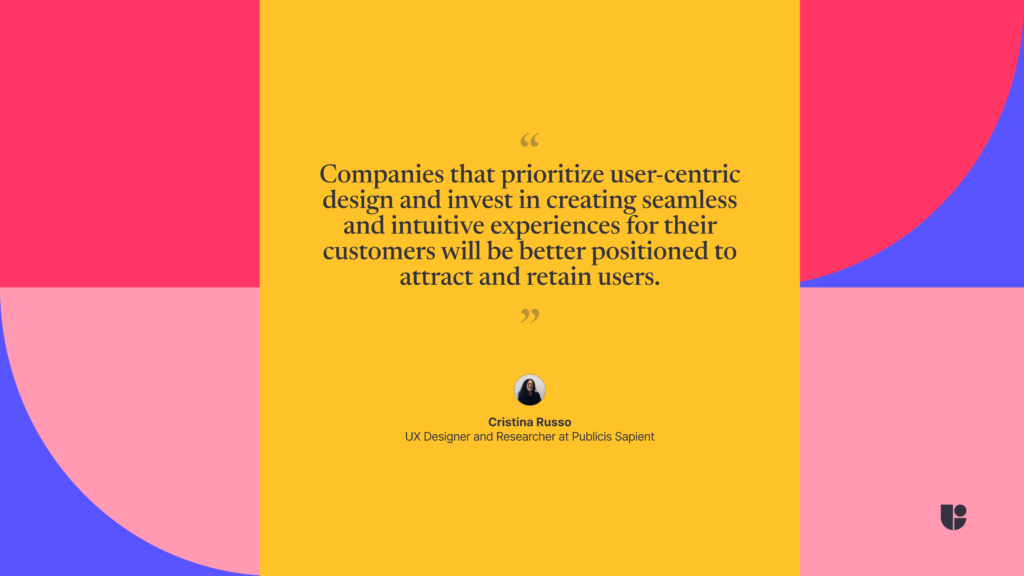
How would you describe the current state of the UX industry in Italy, especially in comparison to global trends?
I believe Italian companies across various sectors are increasingly prioritizing UX design to create digital products and services that meet the needs and expectations of their users. In Italy, there is a notable emphasis on blending technical skills and design sensitivity, reflecting the country’s rich design heritage, and that allows, on one hand, to gather and interpret the needs and desires of the target users, and on the other hand, to best satisfy these insights through the definition of desirable, effective, and technically achievable interfaces.
From your perspective, how will the UX landscape evolve in the next few years in Italy, and what impact will it have on businesses and consumers alike?
As technology becomes increasingly integrated into various aspects of daily life, businesses in Italy will recognize the importance of investing in user experience to remain competitive and meet the evolving expectations of consumers. One significant impact on businesses will be the growing recognition of UX as a strategic differentiator rather than just a functional requirement. Companies that prioritize user-centric design and invest in creating seamless and intuitive experiences for their customers will be better positioned to attract and retain users, ultimately leading to increased customer loyalty and market share.
UX Fun Round
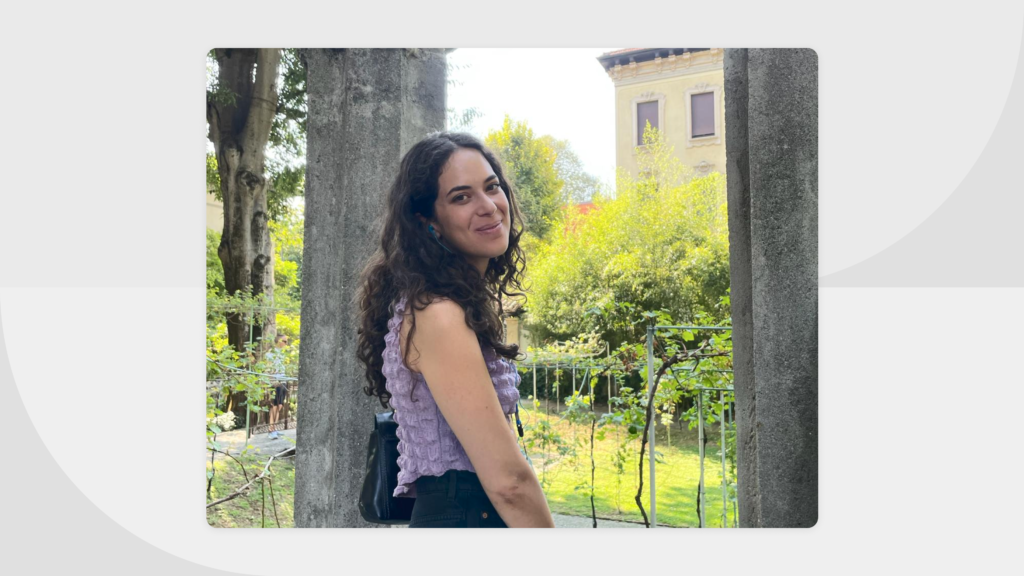
Could you share an unexpected source of inspiration that has impacted your approach to UX?
Studying pedagogy, both for my personal interest and for my Master’s thesis at Politecnico di Milano, introduced me to a wealth of insights about how people learn, communicate, and interact with information. This understanding deeply influenced my approach to UX, particularly in UX research. Pedagogy taught me the importance of empathy, understanding the user’s perspective, and designing experiences that resonate with their needs and preferences. Additionally, pedagogical methodologies, such as active learning and participatory design, provided valuable frameworks for conducting user research and involving stakeholders or other capabilities in the design process.
Given no constraints, what would be your dream UX project to work on and why?
I would say working on a project aimed at improving mental health and well-being on a global scale, but really I’m open and excited about every possibility as long as there is an inclusive, respectful, and growing-oriented work culture.
Conclusion
As Cristina puts it: “It’s often the unconventional paths that lead to groundbreaking discoveries in UX”. This perspective serves as a reminder to all of us in the UX field everywhere to challenge norms, explore new ideas, push the boundaries of possibilities and this exact mindset aligns perfectly with everything that we do at Useberry.
Feel free to contact us!
We’d love to know your experience with Useberry and we will be excited to hear your thoughts and ideas.


